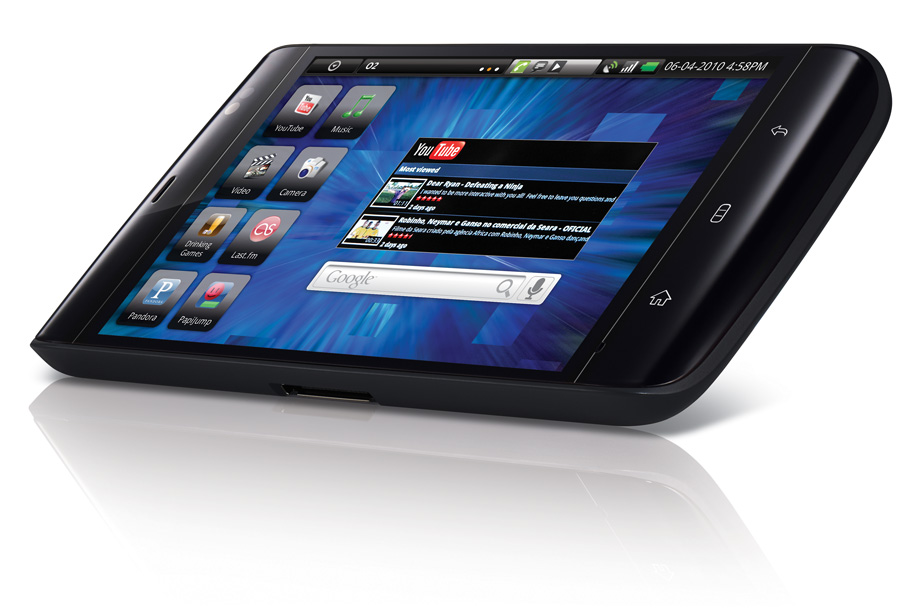Recently Apple posted iPad sales of 2 million+ since its launch. The iPad can send emails, draw pictures, play games, and is an electronic reader. With more and more apps available, it’s blurred the lines between smart phones and tablets and computers, a view that is sure to become more blurred with Applie’s introduction of the iPhone 4G, that introduces more than 100 new features. Competitors are not been waiting to see how things shake out.
Dell has an android-powered piece of technology called the “Streak” coming out this summer. They call it a “tablet.” Except this one has a 5-inch screen, half the size of the iPad, and it can make calls. So while larger than the expected smart phone, it’s small enough to hold up to your ear to make a call.
OK, it’s smart but not specifically a phone. Or a computer. More specifically it’s a data-centric device that can download Web pages in full width that can be used as a GPS device and once upgraded to the Android 2.2 operating system, it will support Flash 10.1 and with a fast 1-GHz Snapdragon processor and two cameras (front and rear) video chats would be possible. One could safely call it a “MID” – a mobile Internet device, aka a “tweener,» something between technologies.
The “tablet” category is too new and too small for us to track it in our Customer Loyalty Engagement Index. The way things are going, perhaps next year. Or maybe a MID category in 2011. But in the meantime, here’s how customers rank their Smart Phone brands:
1. Apple
2. Samsung
3. Blackberry
4. Nokia
5. LG
6. Palm
7. Motorola
“Tweener,» technology has come and gone, but up till now the concept hasn’t been able to successfully embody consumer’s increased technological expectations and increased technology in a one-size-fits-all device. That’s because if you rely on traditional category and new-product metrics it’s hard to get consumers to meaningfully articulate size and technology combinations.
Image Courtesy: Dell.com
Dell’s brand recognition might help differentiate the device from the dozens of other upcoming Android devices, but as everyone knows, brand awareness is no leading-indicator of consumer engagement or sales (Dell ranks 2nd after Apple in the Laptop Computer category and 5th in the Netbook category). And with the potential loss of iPhone exclusivity, the rumor is that AT&T will carry the Streak, although Dell has been closed-mouthed about both potential carriers and pricing and Apple hasn’t indicated whether they’ll renew for another 2 years with AT&T.
Questions abound: Will the Streak be positioned as a smart phone, a tablet, or a MID? Will it be hard for consumers to grasp the concept of a smart phone- tablet-like device? Will it produce significant volume? Can the Dell brand successfully compete against entrenched smart phone brands, particularly Apple, even in a newly rejuvenated MID category? Is it a category at all? What will Apple do next?
We vote for calling it “Tweener,” a good term for what’s happening to technology today, both generally and specifically. Is a phone, no matter how “smart,” just a phone? There’s been a lot of speculation going around about the new iPhone 4G, which seems to be a total overhaul of their “smart phone” and is packed with so much new hardware and multi-tasking software that it’s hard to decide precisely what it is.
The iPhone 4G not only has an OLED screen, but real application folders and unified mailboxes. It’s smaller than its brother, the iPad and the new Dell offering, but more transportable than a netbook. It can multi-task and video chat and conference call and has an HD camcorder, a 5 megapixel camera (with flash) and HD audio. Oh, and GPS. And the iPhone 4G is a great media player and can playback lots of music and video formats The iPhone 4G will also have full access to around 185,000 apps like Google Maps, iBooks, digital compass, Safari browser and TV-out features, which is one of the critical drivers in engagement in the category, no matter what name it officially goes under. Beginning to sound like something more than just a phone? More like a MID ” – a mobile Internet device? A “tweener» that’s between technologies whatever it is, is a real game – and category nomenclature – changer.
Three sure things though: First, consumer expectations will continue to grow, especially about technology. Second, predictive loyalty and engagement assessments can help to answer some of those questions. And third, technology often presumes there’s just one right way to do things. There never is.
About the Author
Robert Passikoff is a founder and president of Brand Keys, a global thought leader in loyalty and engagement.
Dr. Passikoff’s best-selling book, Predicting Market Success, provided marketers with a 21st century perspective on loyalty metrics, and his new book, «The Certainty Principle», addresses consumer engagement in the new media marketplace.

